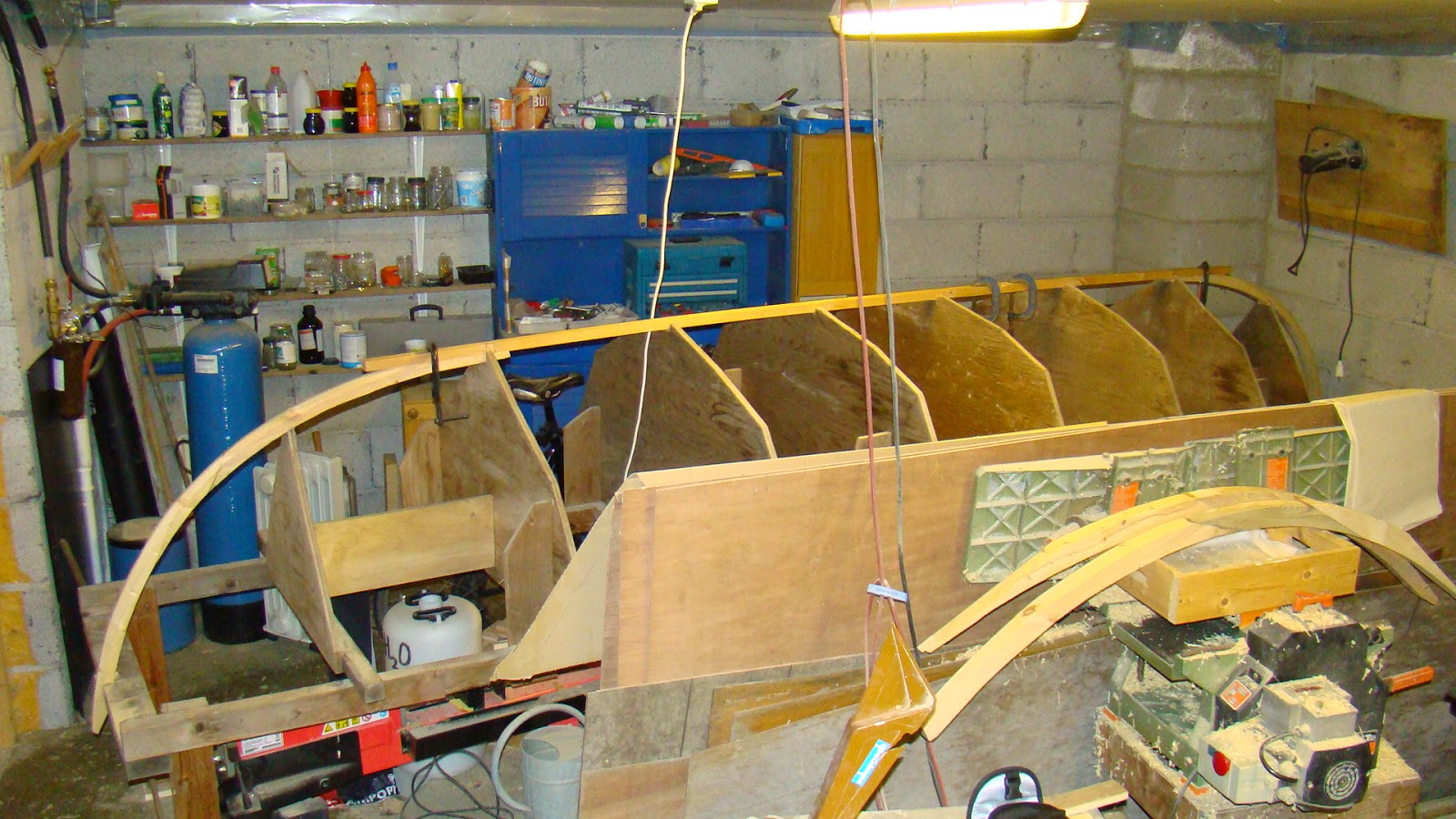The boat designer Iain Oughtred has a special feeling for Shetland and Norwegian boats, and so it was appropriate, as I was living in Norway, to choose one of his boats to build - a Hardanger Færing. 'Elf'. I started building it around 2005; progress was slow, but now (end of 2017) it is virtually ready to put in the water.
The hull consists of 3 plywood strakes each side; the two
internal frames are laminated from thin strips of wood glued with epoxy resin.
(The epoxy needs a warm temperature to set, and so work was effectively
limited to the summer months, when there were other distractions, accounting
for the protracted construction time.) I realised early on that working on
houses is no preparation for building a boat; there are just no straight lines
or right angles. However, the challenge was well worthwhile, given Iain's
excellent book as a guide.

Setting the keelson on the frames together with stem and stern posts
The hull was constructed on a sort of 3-D template, of
plywood shapes set at intervals (stations) along the length of the boat (15
feet, 4.57 m).
 The first strake glued to the keelson
The first strake glued to the keelsonThe second strake, with simple, clever wooden clamps holding it against the upper edge of the first strake while the epoxy resin glue sets
The oar locks of this design are strictly known as tholes.
They are made from acacia wood and glued to the gunwale; I'm hoping they will
withstand the pull of the oars. They will eventually have a rope ring attached,
to keep the oars in place.
Room for two rowers and one passenger
Once the boat was complete, I
took advice from somewhere to cover the hull in a synthetic mesh, Dynel, to
strengthen it. Gluing the mesh on the curvature of the hull with epoxy proved
to be very difficult, and there were many 'bubbles' where the mesh had simply
not attached to the wood. These bubbles (at least the most obvious ones) I cut
out, and patched the exposed areas as best I could. Also, where adjacent sections
of mesh met, the overlap was visible. All in all, the hull was a bit of a mess,
and I regretted taking that advice.
Floor boards in place, boat oil applied
I decided that making the oars would be too much of a
challenge, so I ordered them from a boatbuilder at the Hardanger og Voss
Museum, in Norheimsund - Hardangerfjord being the home of this very traditional
boat. The oars were ready at the end of 2018, but it was July 2019 before we
collected them - with the help of good friend (and boat enthusiast) Gunnar
Brunborg. There were several Elf-like færings at the boatyard - a couple for
sale, and others in the water; we borrowed one for a brief and impressively fast
row. I had a close look at the tholes to
see exactly where the holes were drilled for the rope ring to hold the oar in
place - I'd found Iain's drawing hard to interpret.
The oars are works of art (or craftsmanship). We met the
ex-marine biologist apprentice who had had a hand in making them. The end of
the oar by the handle has delicate carving - the craftsman's trademark.
Back in Oslo, we transported the oars - around 2.5 metres
long - by metro, tram, ferry and bus to our house on Nesodden - a journey best
forgotten.
With holes drilled in the tholes and rope rings inserted, it
was time, finally, to launch the boat, which we did in the small lake near the
house, two of us carrying it 70 metres or so down to the water. Present at the
launch, apart from Maria and myself, were Maria's daughter Katka, her partner
Martin, and 19 month-old son Adam (who launched himself into the water), joined
later by neighbours Trond and Ingrid.
And below is one of the small boats recovered with the big ships in the Viking Ship Museum on Bygdøy - so similar - just a bit more pointed at the ends!




















